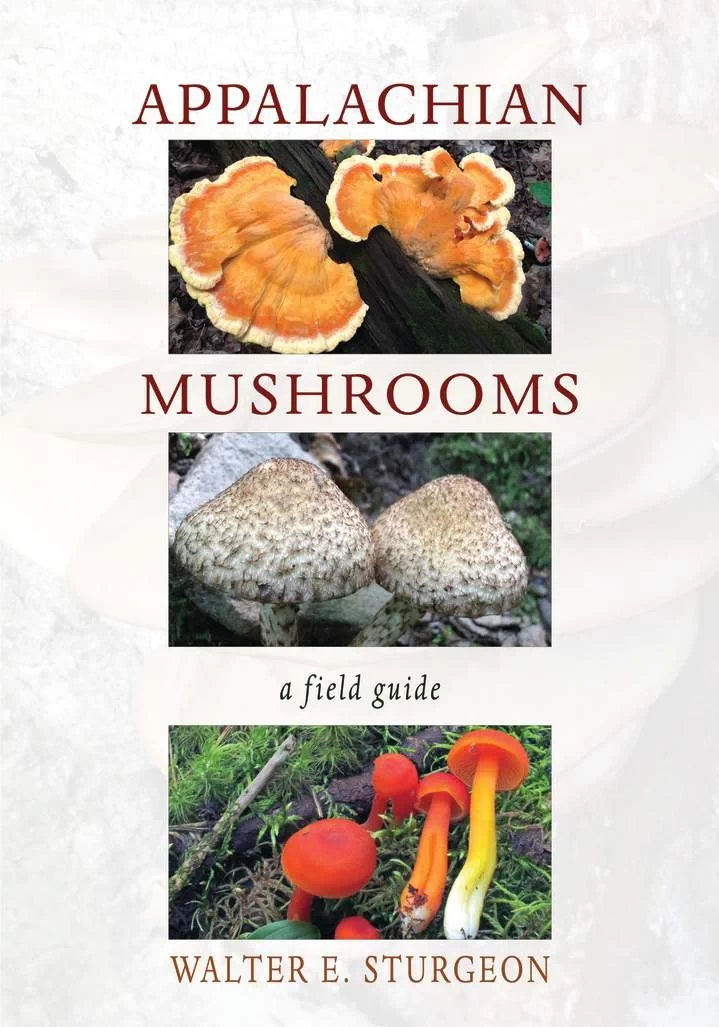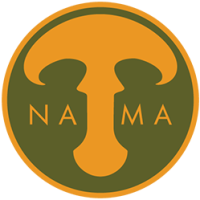Walt Sturgeon is a well-regarded field mycologist familiar to NAMA members and others who participate in any of the major annual multi-day forays that take place especially east of North America’s Rocky Mountains. He is at the top of everyone’s invitation wish list of favorite guest mycologists invited to give illustrated talks on various mycological topics, and especially for his expertise in identifying fungi for the display tables. His photographs of fungi have graced several recently published field guides and are often among the most spectacular that can be found on mushroom Facebook forums. He has co-authored three mushroom field guides, but this is his first solo contribution.
The book itself is over 500 pages in length, including concise cautionary remarks about eating unidentified fungi, brief instructions on mushroom identification and on using the book. Included descriptions start with the scientific name of the fungus, synonyms, common names if any, and the mushroom’s family association. The author covers details of the cap, flesh, spore-producing surface, stem, spore print, ecology, edibility and informative comments. The lower third of each page features the described fungus in a photo that shows the cap and hymenium. I suspect that the photos given to the publishers to accompany the descriptions were originally brighter than they appear in print. Rounding out its offerings is a succinct glossary of mycological terms used, a partial list of mushroom organizations, a short list of references, an index of scientific names, and an index of common names.
It is always interesting to see how different authors organize the placement of the various macro-fungi treated their books. Given that potential readers will have different abilities with respect to their familiarity with fungi, it is not an easy task. One can use fungal shape, size, cap color, family, genus, function, habitat, substrate or spore color, among several other possibilities to arrange their selections for publication. The author has employed a variety of categories, often artificial, to enable curious mushroom hunters to find detailed information on particular fungi.
The book is divided into two main sections: gilled mushrooms and fungi without gills. The gilled mushroom sections are further organized by spore color: white-spored and colored-spored. Users of the field guide will be required to make spore prints of their finds rather than try to simply match them with the mushrooms described and depicted in the book. Instructions for doing so are given at the beginning of the book. These start with notes on general distinguishing features and descriptions of select species of Amanita, Russula, Lactarius, and Lactifluus. Four additional sections on white-spored mushrooms, differentiated by overall size, texture and substrate follow. Waxy cap mushrooms are divided into two parts: medium to large with a waxy feel (Hygrophorus), and small with a waxy texture (Gliophorus, Hygrocybe, and Humidicutis). The author follows with descriptions of medium to large Melanoleuca and Tricholoma. The remaining described fungi are in the category termed ‘Other White-spored Mushrooms’ such as Macrolepiota, Ossicaulis, Armillaria, Pleurocybella, Mycena, Gymnopus, Marasmius, Szhizophyllum, and so on.
The next part of the field guide is devoted to colored-spored mushrooms ranging from salmon pink (Clitopilus, Entoloma, Pluteus, Rhodocollybia and Volvariella) to brown (Agrocybe, Bolbitius, Conocybe, Crepidotus, Galerina, Hebeloma, Inocybe, Simocybe, and Tapinella) and finally purple-brown to black (Agaricus, Coprinellus, Corinopsis, Coprinus, Gomphidius, Hypholoma, Lacrymaria, Psathyrella, and Stropharia).
The subsequent part of Appalachian Mushrooms has separate sections on boletes, polypores, chanterelles and allies, club and coral-like fungi, spine fungi, puffballs and other gasteromycetes, cup-shaped and resupinate fungi, gelatinous and rubbery fruiting bodies, and ends with descriptions of morels and gyromitras. Each of the various sections conveniently begins with keys for finding fungi included in the descriptions. They are relatively easy to use. Missing is any information on spore shape and size. This won’t be a problem for those of us who mainly want to know which fungi are edible and which are not, or (perhaps foolishly) trust our observation skills and have little patience for microscopic analysis. While it purports to focus on fungi of the Appalachians from Canada through Georgia, nearly all of the mushrooms described in this book can also be found on either side of the mountain range. This field guide will be useful to both hikers and foragers interested in adding another good identification guide to their mycological library. The decision to devote a full page for the description and photo of each fungus will be appreciated, especially by more mature folks with vision challenges. Appalachian Mushrooms is one of many recently published field guides to fungi of the eastern half of North America. I don’t think we can have too many. It is always useful and informative to read them for the unique perspective each affords us.
Review by Dianna Smith, 2021


NAMA Store >